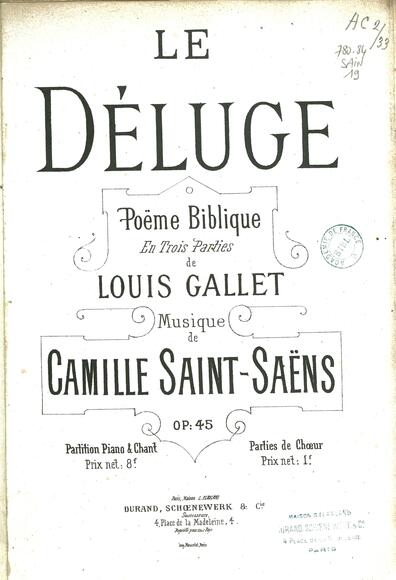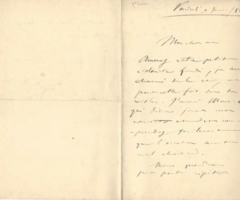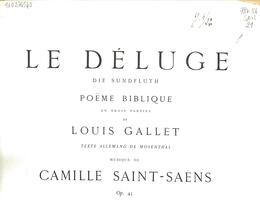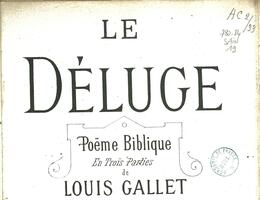Le Déluge

Poème biblique en 1 prologue et 3 parties créé aux Concerts Colonne le 5 mars 1876.
An oratorio composed by Saint-Saëns in 1875 to a “poème biblique” by Louis Gallet, Le Déluge was performed for the first time on 5 March 1876 at the Théâtre du Châtelet, where it was enthusiastically received by the audience. The work opens with an instrumental prelude for strings and solo violin which represents the beauty and tranquillity of the world before men turned away from God – this prelude is often performed on its own as a concert piece. This is followed by three parts for four solo voices (soprano, contralto, tenor and bass), chorus and symphony orchestra, which evoke by turns God’s wrath (“J’exterminerai cette race”) and the announcement of the flood, the inexorable rising waters and the submersion of the world and, finally, renewed hope and the divine promise (“Je ne maudirai plus la terre”, a vocal quartet which Saint-Saëns regarded as “the keystone of the whole structure”). Mirroring the poetic version of the episode in Genesis which favours narration over dialogue, the work relies more on the orchestra than the solo voices to present the narrative. Saint-Saëns therefore employs orchestral devices able to portray the effects of the story line. The most noteworthy example occurs when, to accentuate the fear caused by the flood, he adds two trumpets, two six-piston trombones, three contrabass tubas, a tam-tam and chromatic kettledrums to the initial forces, and uses the ebb and flow of ascending and descending scales to depict the tumultuous waters laying waste to the earth. Le Déluge is also characterised by the repeat of melodic themes which heighten the narrative power of the music and by the presence of fugato passages that reveal the composer’s predilection for counterpoint.



